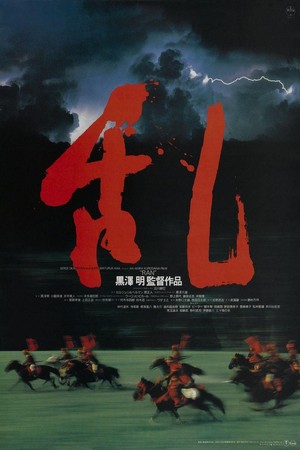
Ran (1985)
Revolt / 乱

Raiting: ![]() 8,1 /10
8,1 /10
Genre: Drama
Director: Akira Kurosawa
Stars: Tatsuya Nakadai, Akira Terao and Jinpachi Nezu
Country: Japan / France
Release date: 1 June 1985
Length: 162 minutes


Raiting: ![]() 8,1 /10
8,1 /10
Genre: Drama
Director: Akira Kurosawa
Stars: Tatsuya Nakadai, Akira Terao and Jinpachi Nezu
Country: Japan / France
Release date: 1 June 1985
Length: 162 minutes